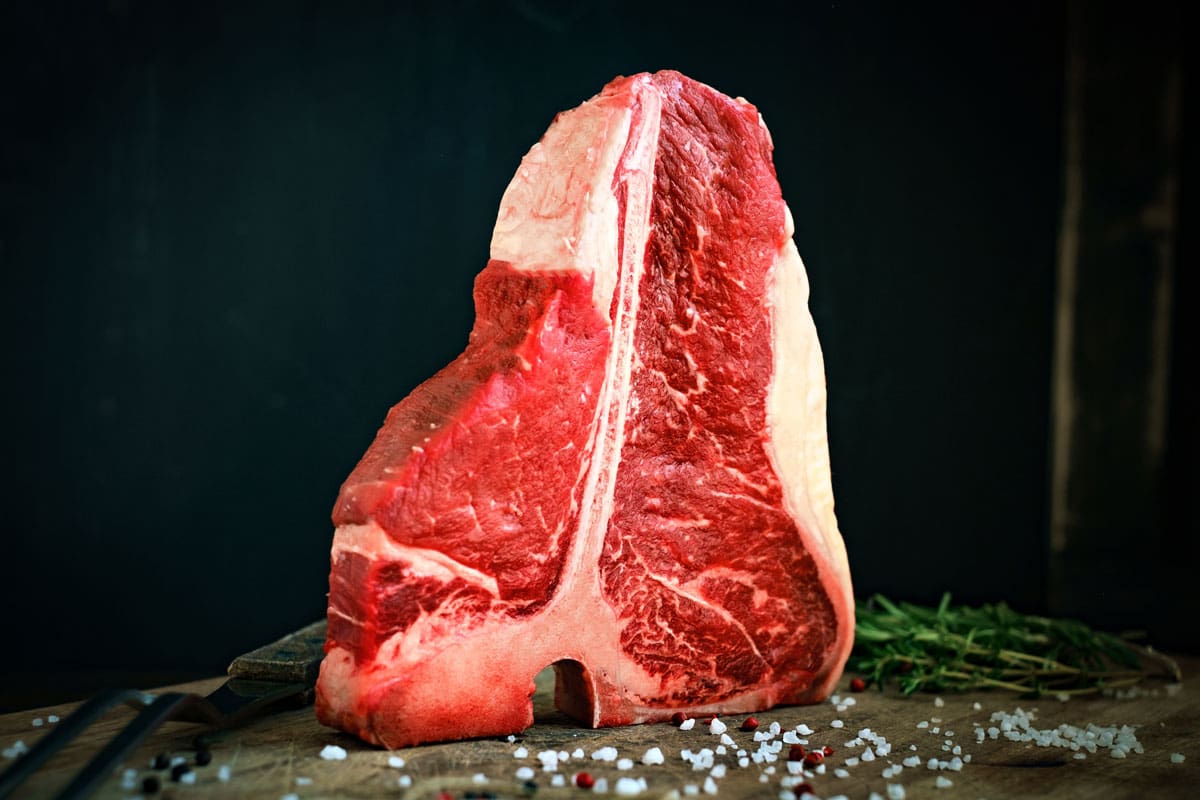T Bone
$32.00
Out of stock
Description
A grass-finished T-bone steak comes from cattle that were not only raised on pasture but also exclusively fed grass (and forage) throughout their lives. This distinguishes it from conventional beef or grain-finished beef, where animals are typically fed grain during the final stages of their life for quicker fattening and a different flavor profile.
Key Characteristics of Grass-Finished T-Bone Steak:
- Flavor Profile:
- Grass-finished beef has a more robust, earthy, and slightly gamier taste compared to grain-finished beef, which tends to be milder and sweeter.
- Its flavor reflects the natural forages the cattle consumed, making it unique and regionally specific.
- Nutritional Benefits:
- Higher in omega-3 fatty acids and conjugated linoleic acid (CLA), which are beneficial for heart health.
- Contains more vitamins like A and E, as well as antioxidants.
- Lower in overall fat content compared to grain-finished beef.
- Texture:
- Grass-finished T-bone steaks are leaner, which can result in a firmer texture. Proper cooking methods (e.g., lower heat and shorter cooking times) are important to preserve tenderness and juiciness.
- Appearance:
- The fat in grass-finished beef often has a slightly yellowish hue due to carotenoids from the grass diet.
- Sustainability:
- Grass-finished beef is often produced using regenerative farming practices, which can enhance soil health, reduce carbon emissions, and promote biodiversity.
T-Bone Steak Specifics:
- The T-bone steak itself is a cut that includes portions of two different muscles: the tenderloin (mild and buttery) on one side and the strip steak (more flavorful and robust) on the other, separated by a T-shaped bone.
- When grass-finished, both these portions will carry the distinct characteristics of leaner, nutrient-dense beef.
When preparing grass-finished T-bone steak, it’s recommended to use marinades, avoid overcooking, and rest the steak after cooking to enhance tenderness and flavor.







Reviews
There are no reviews yet.